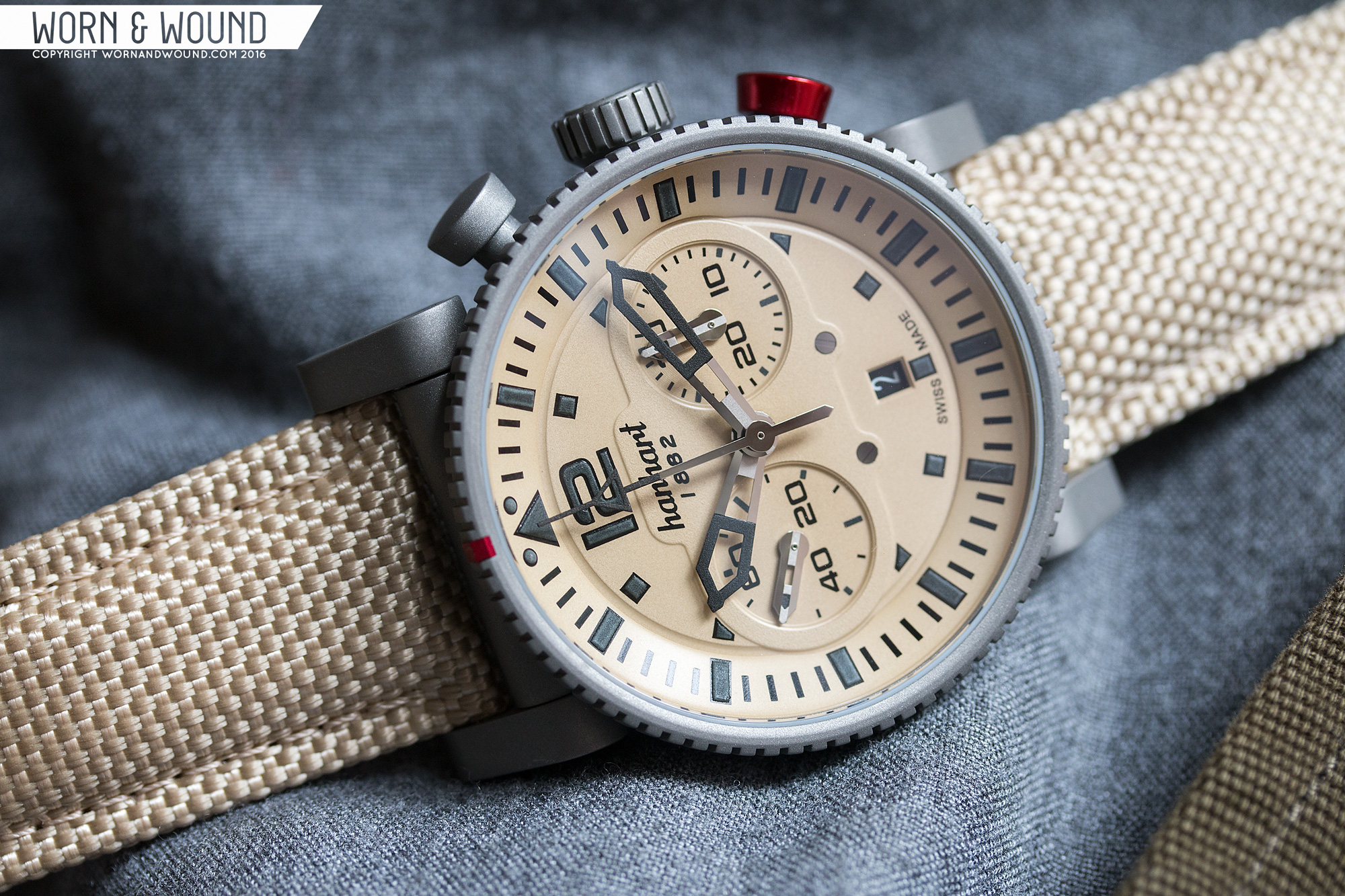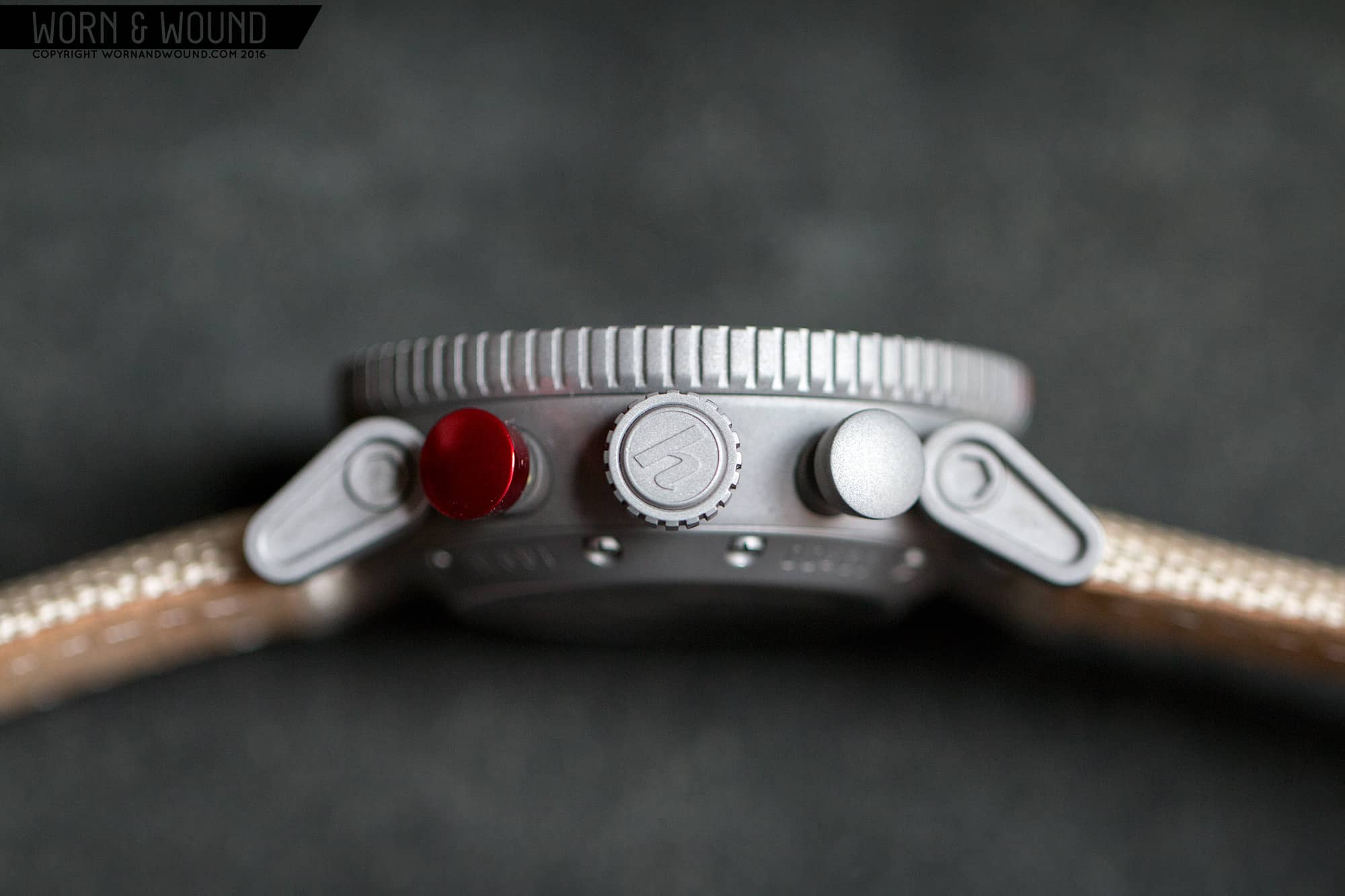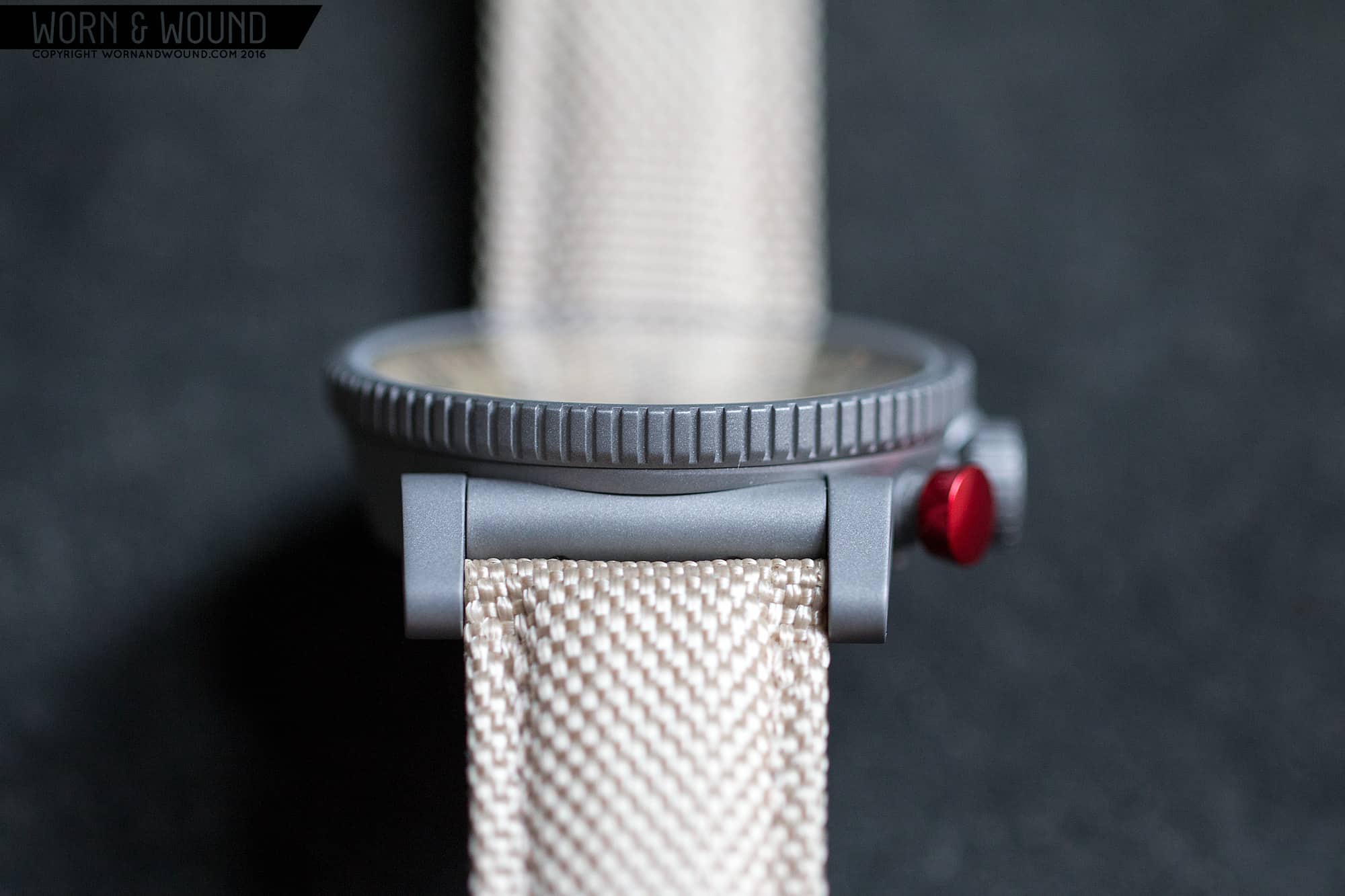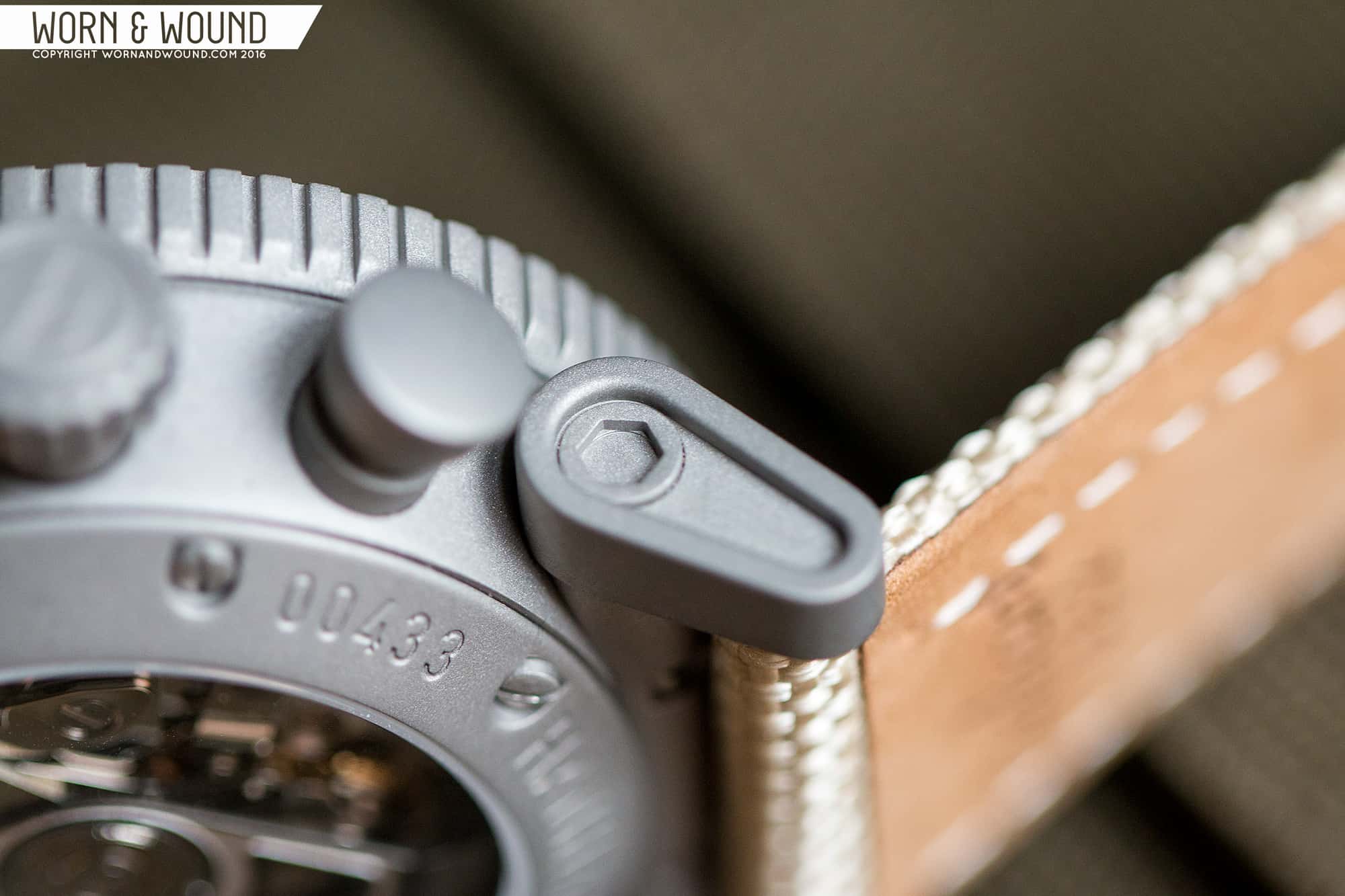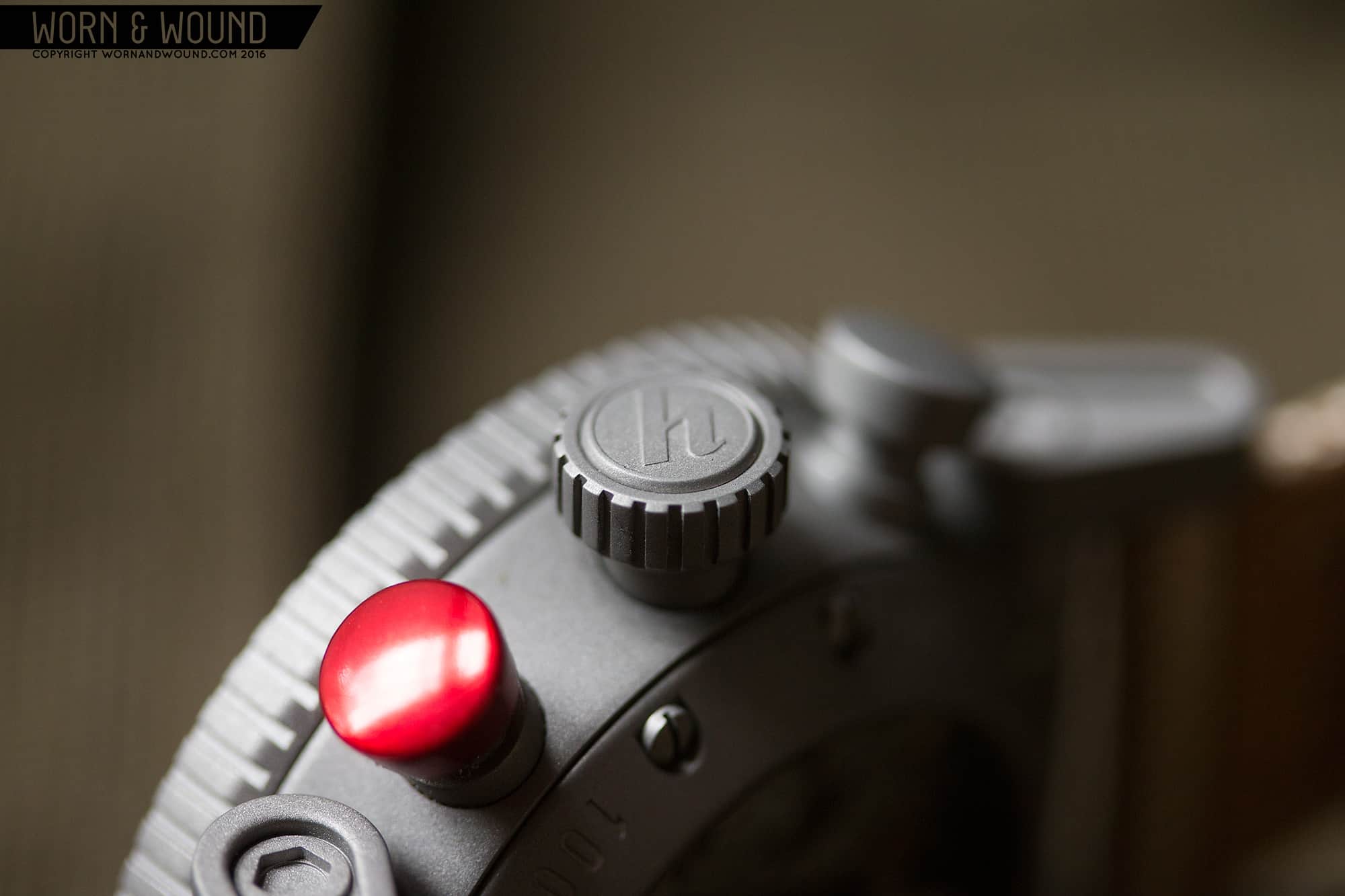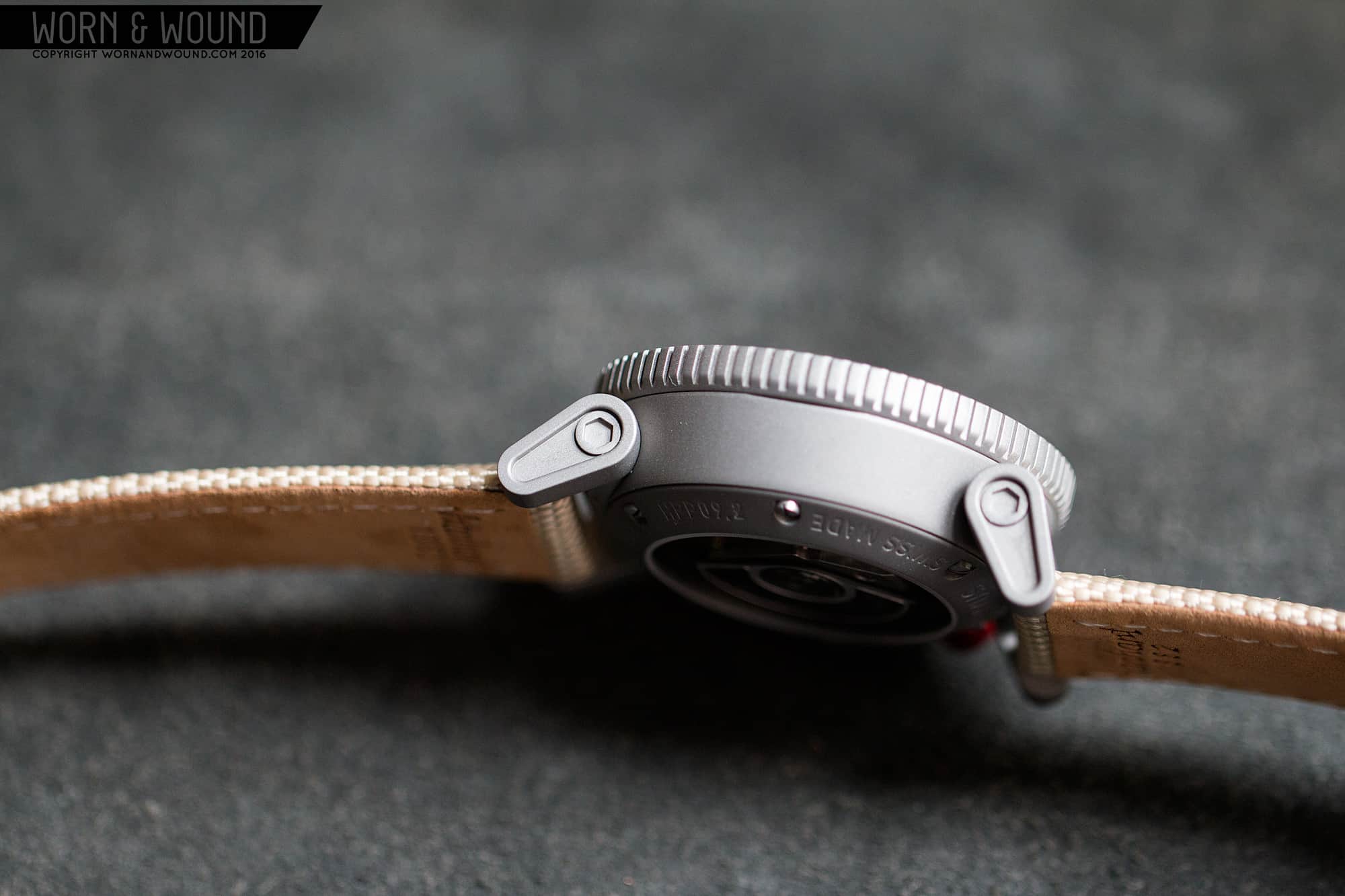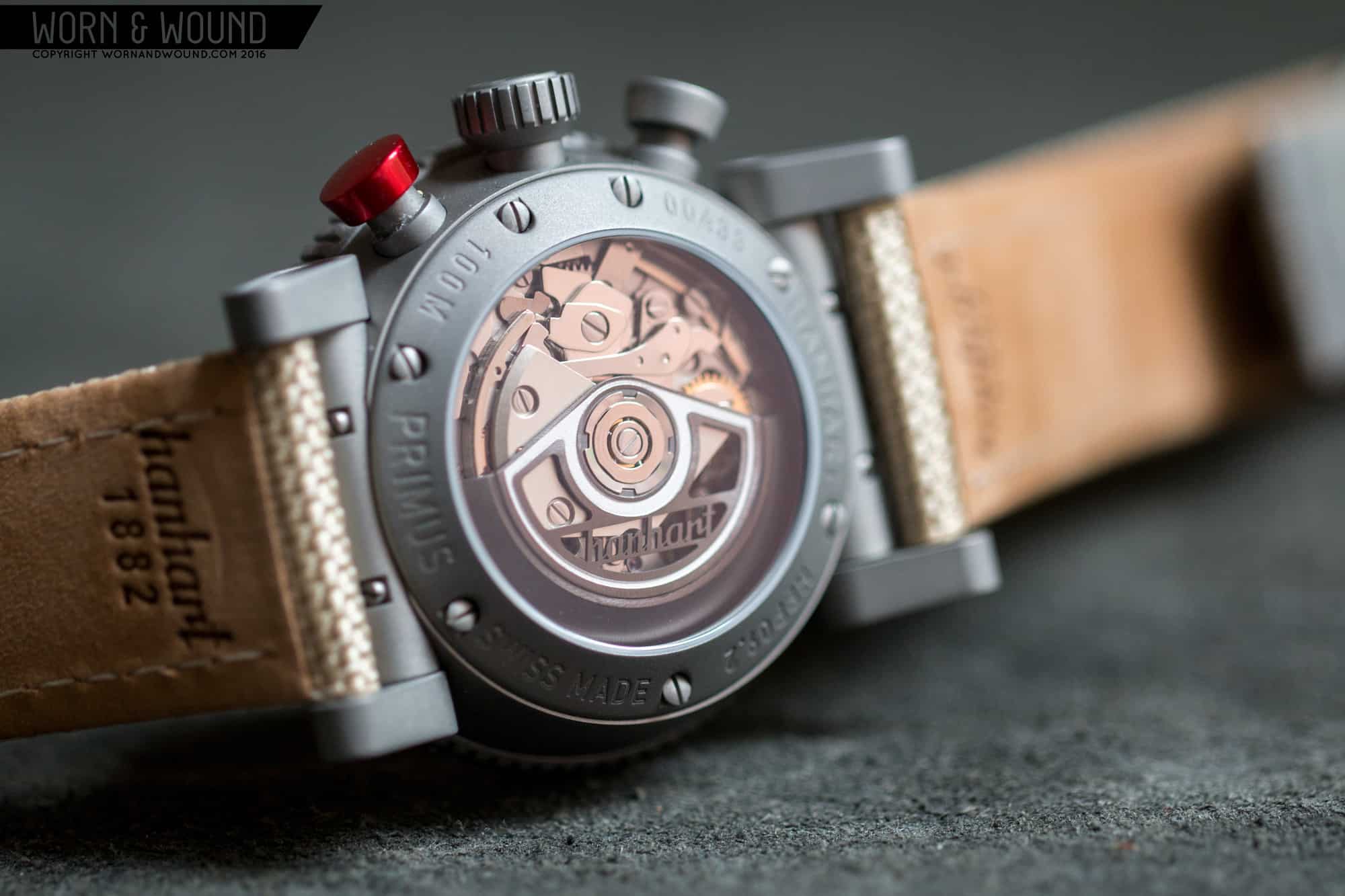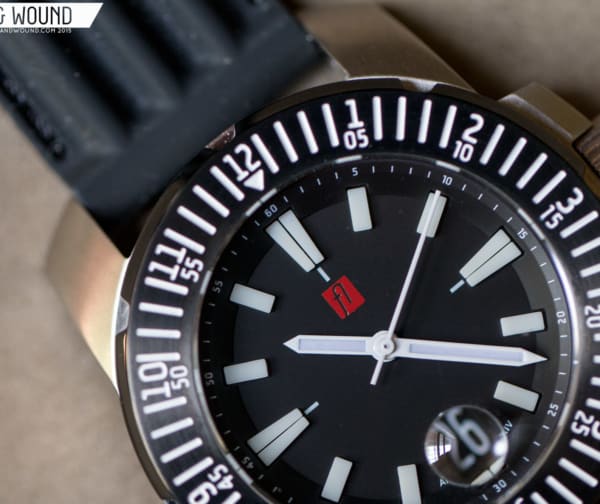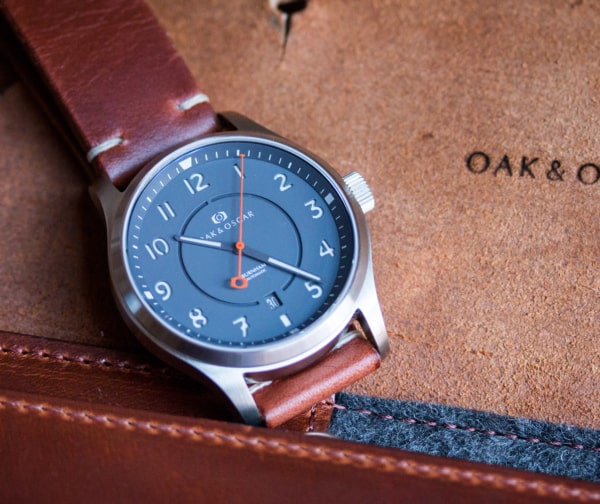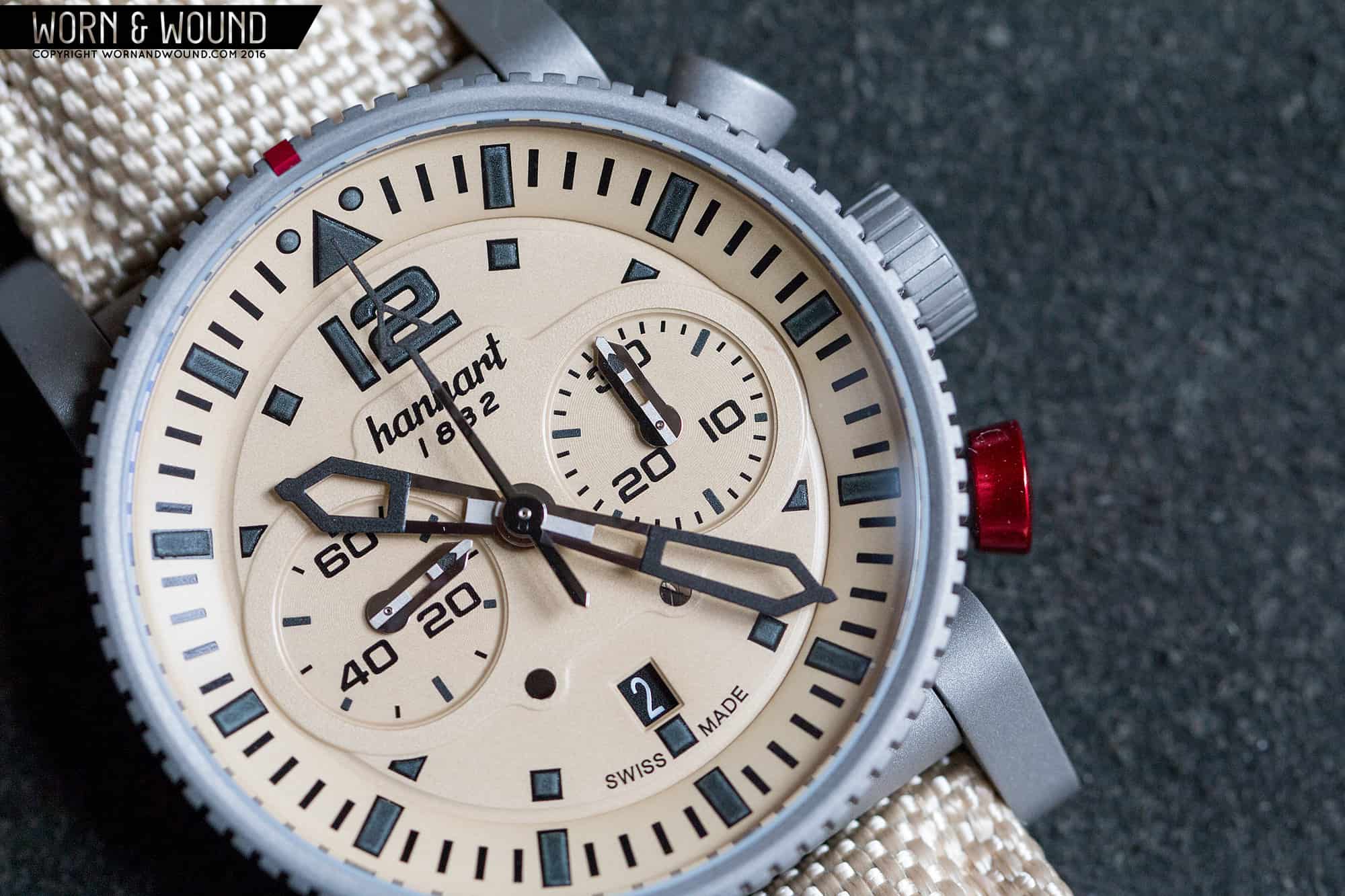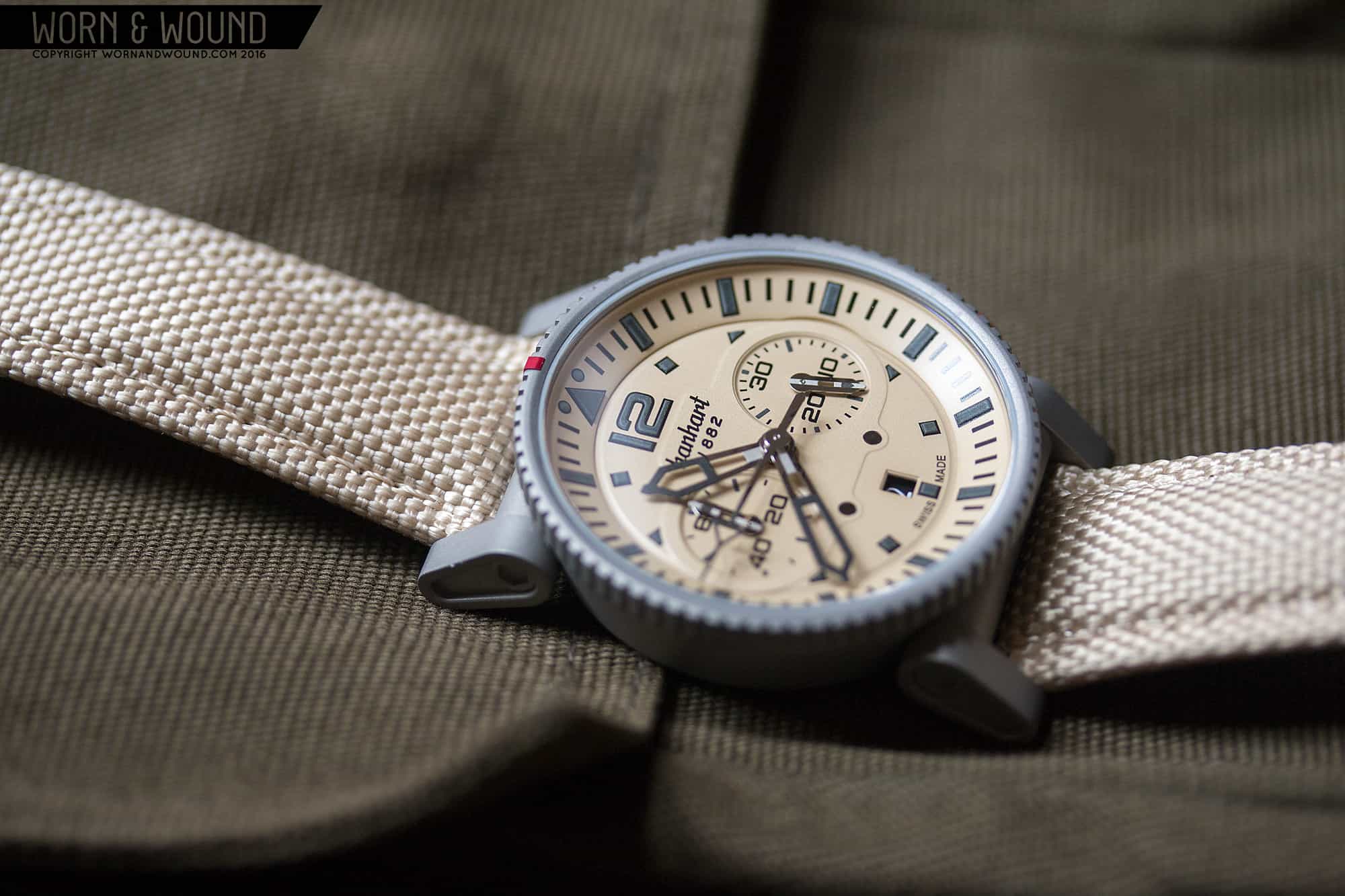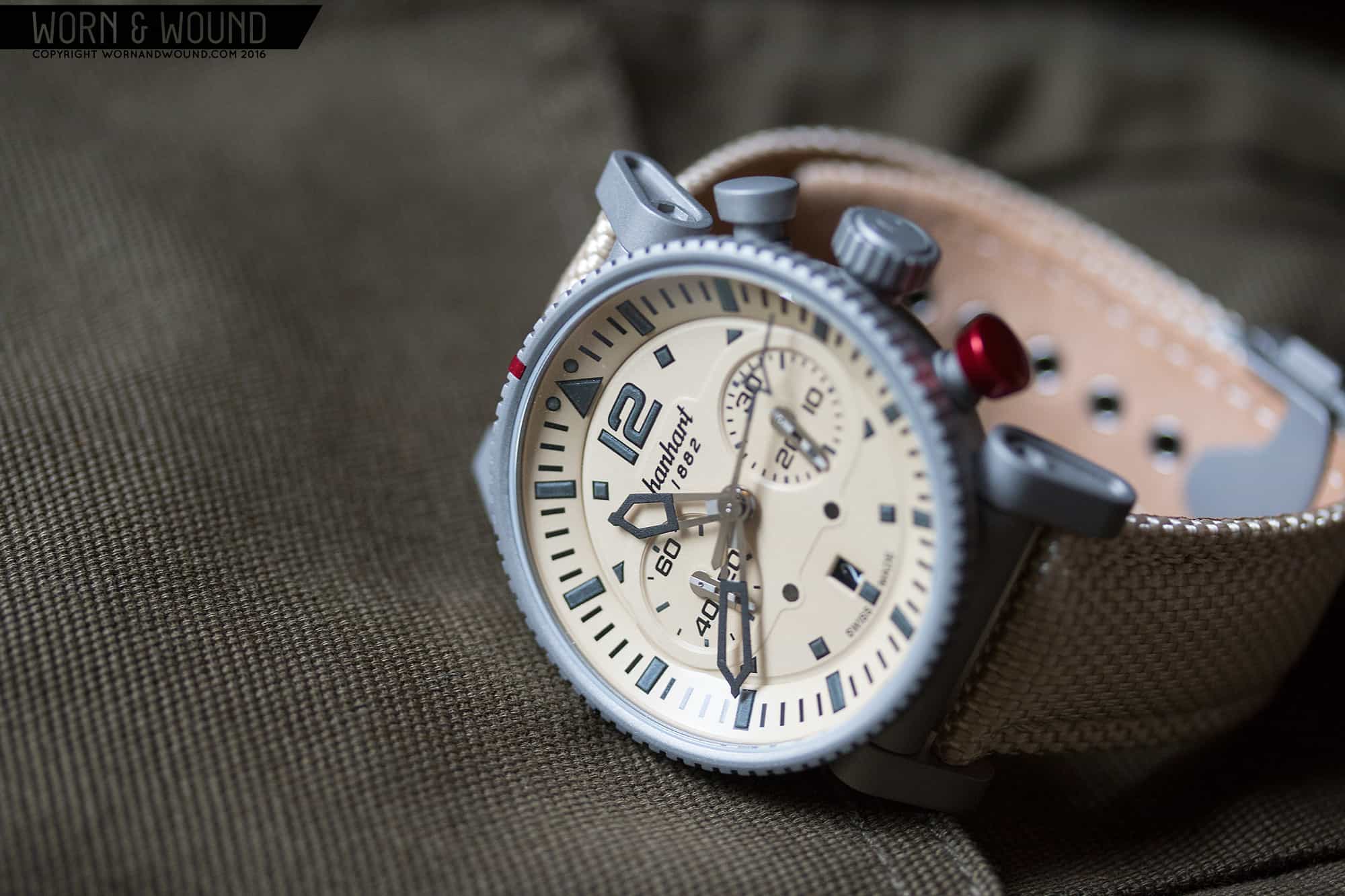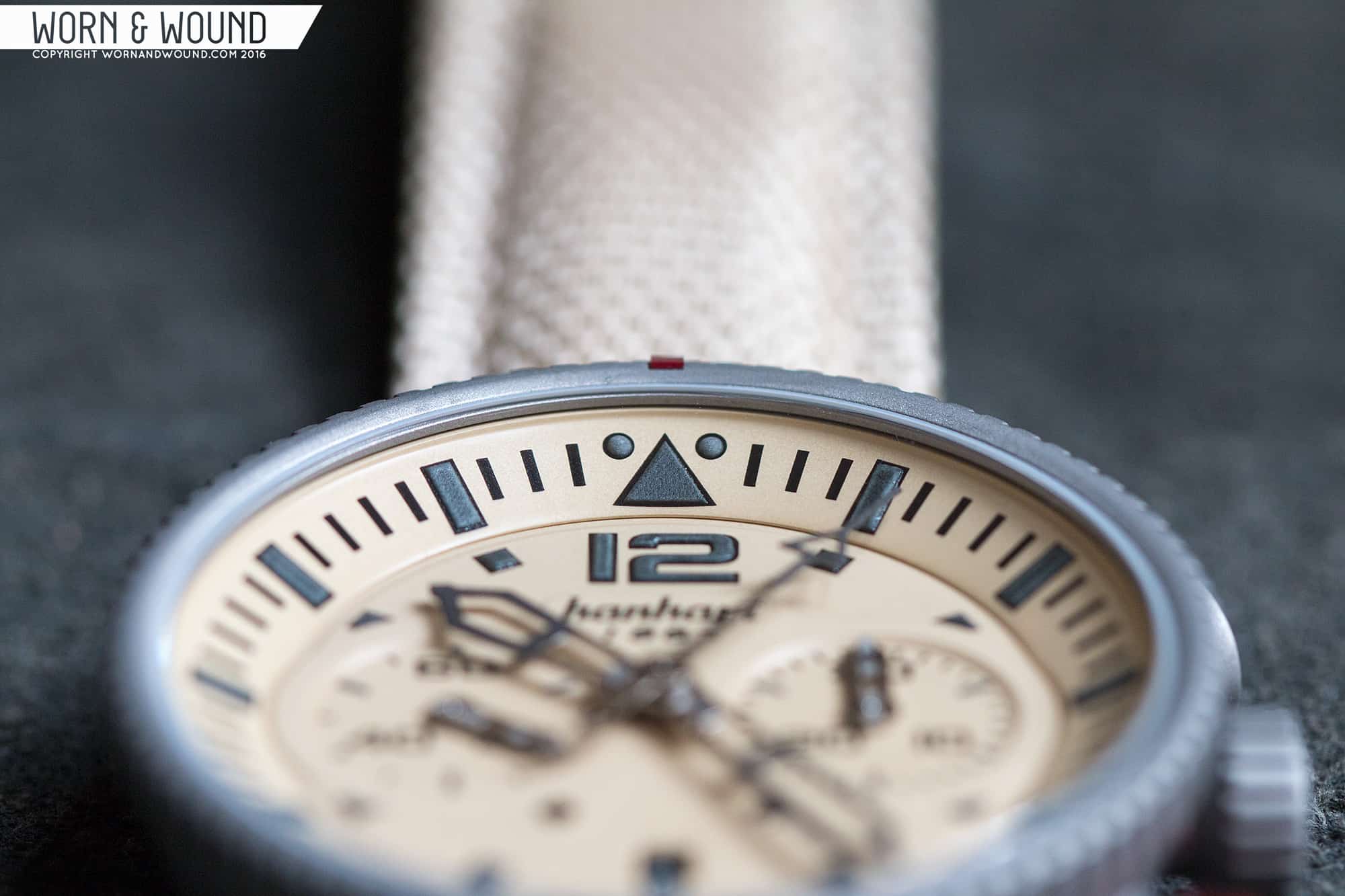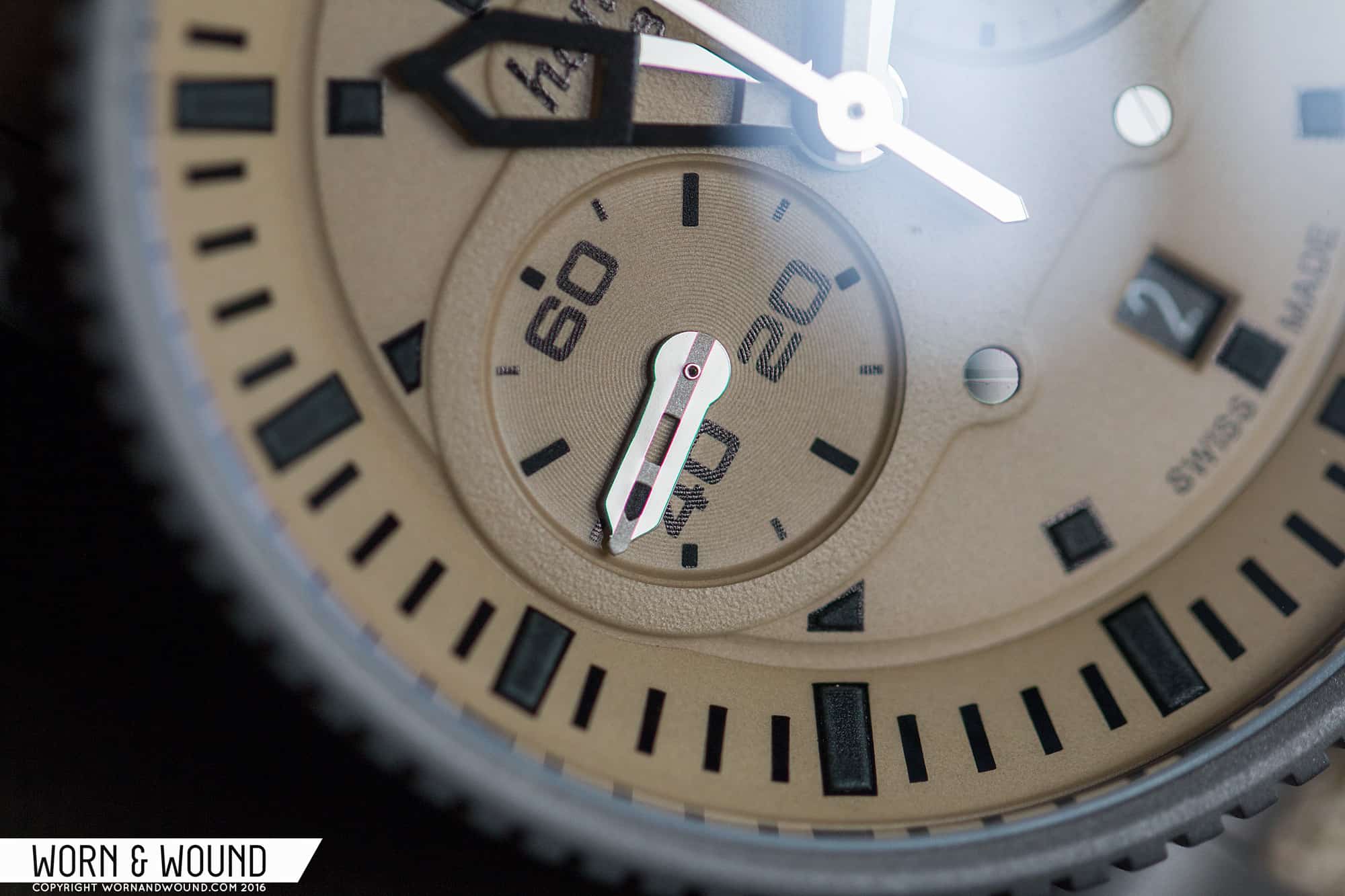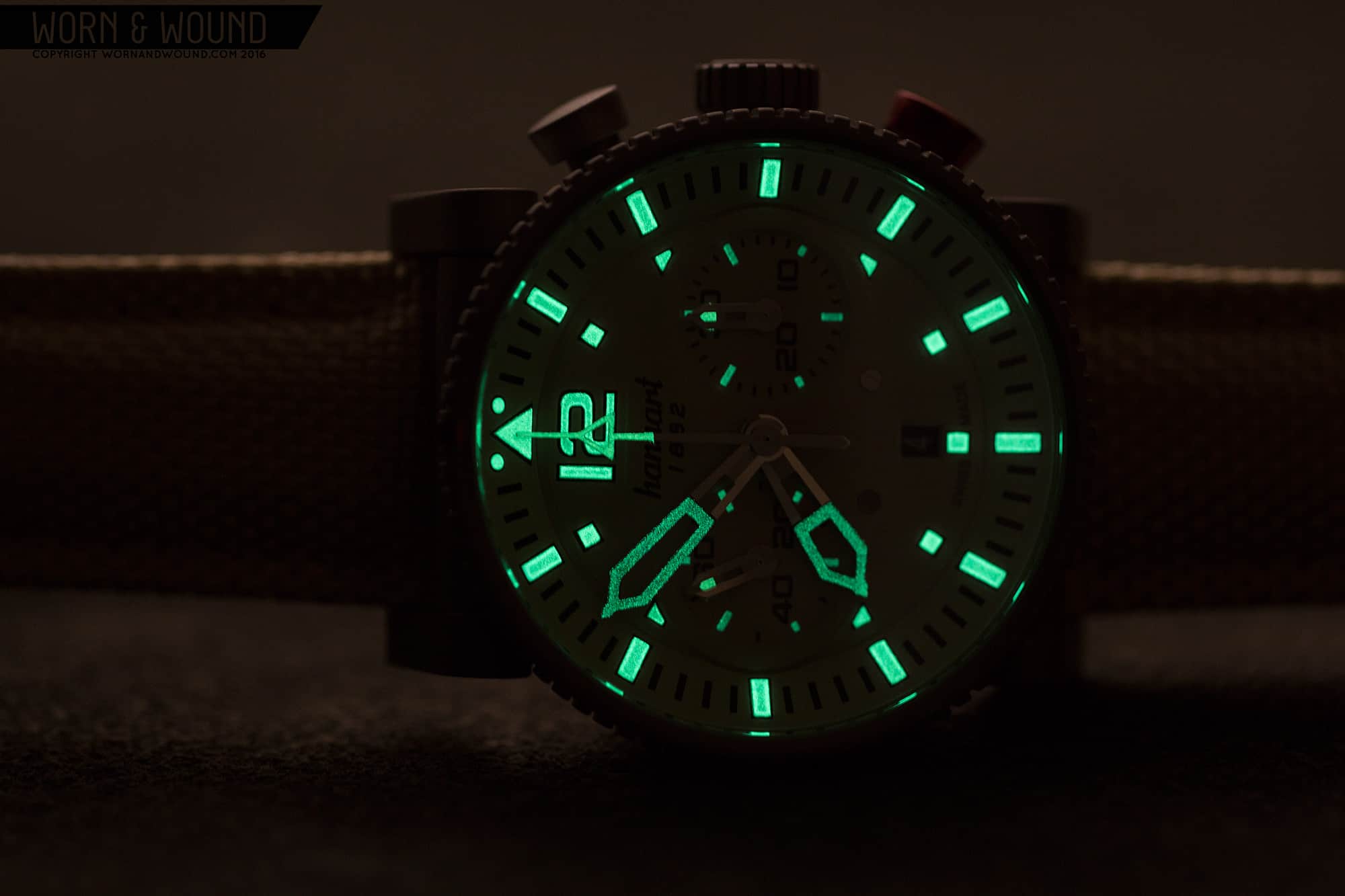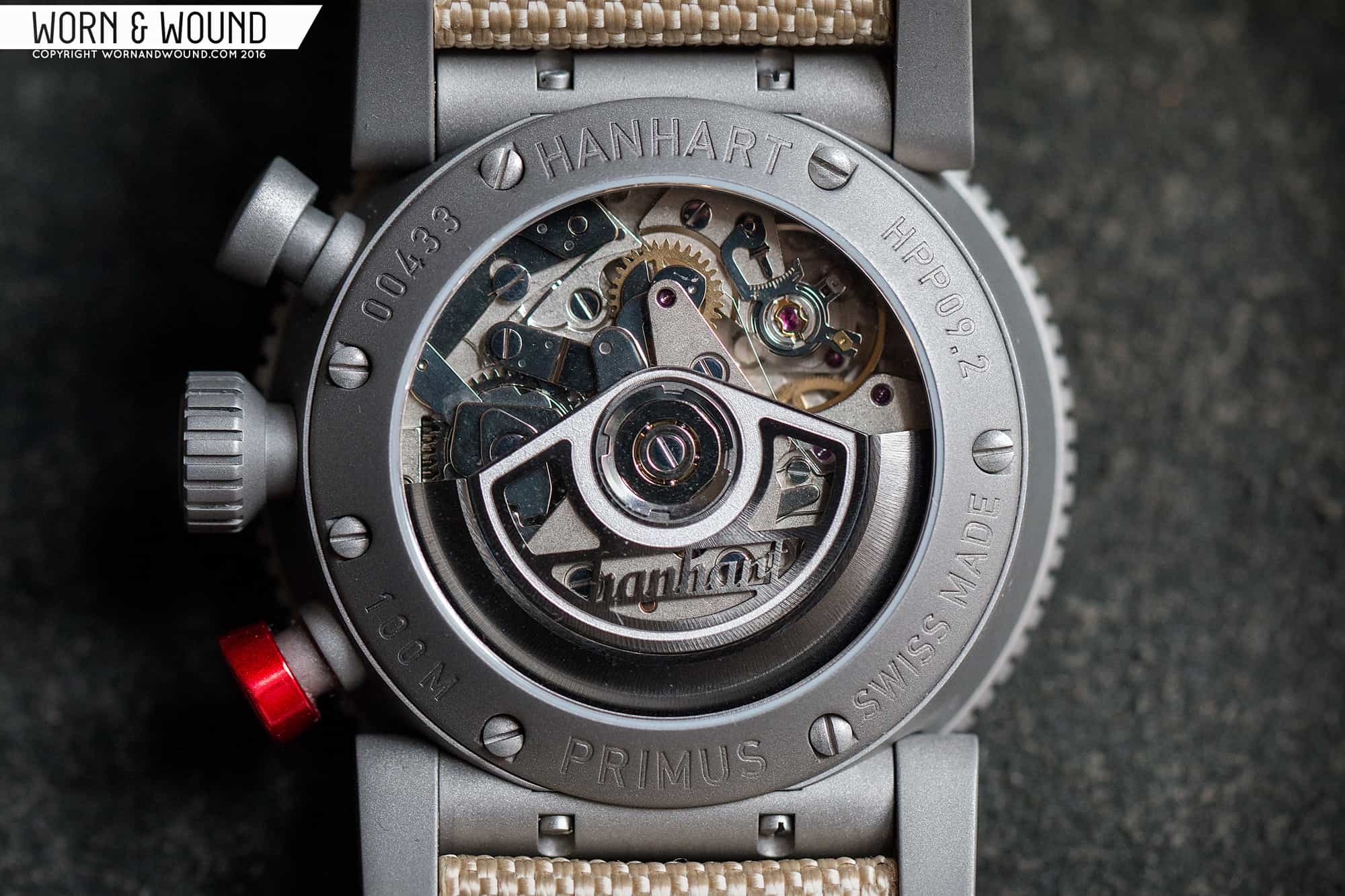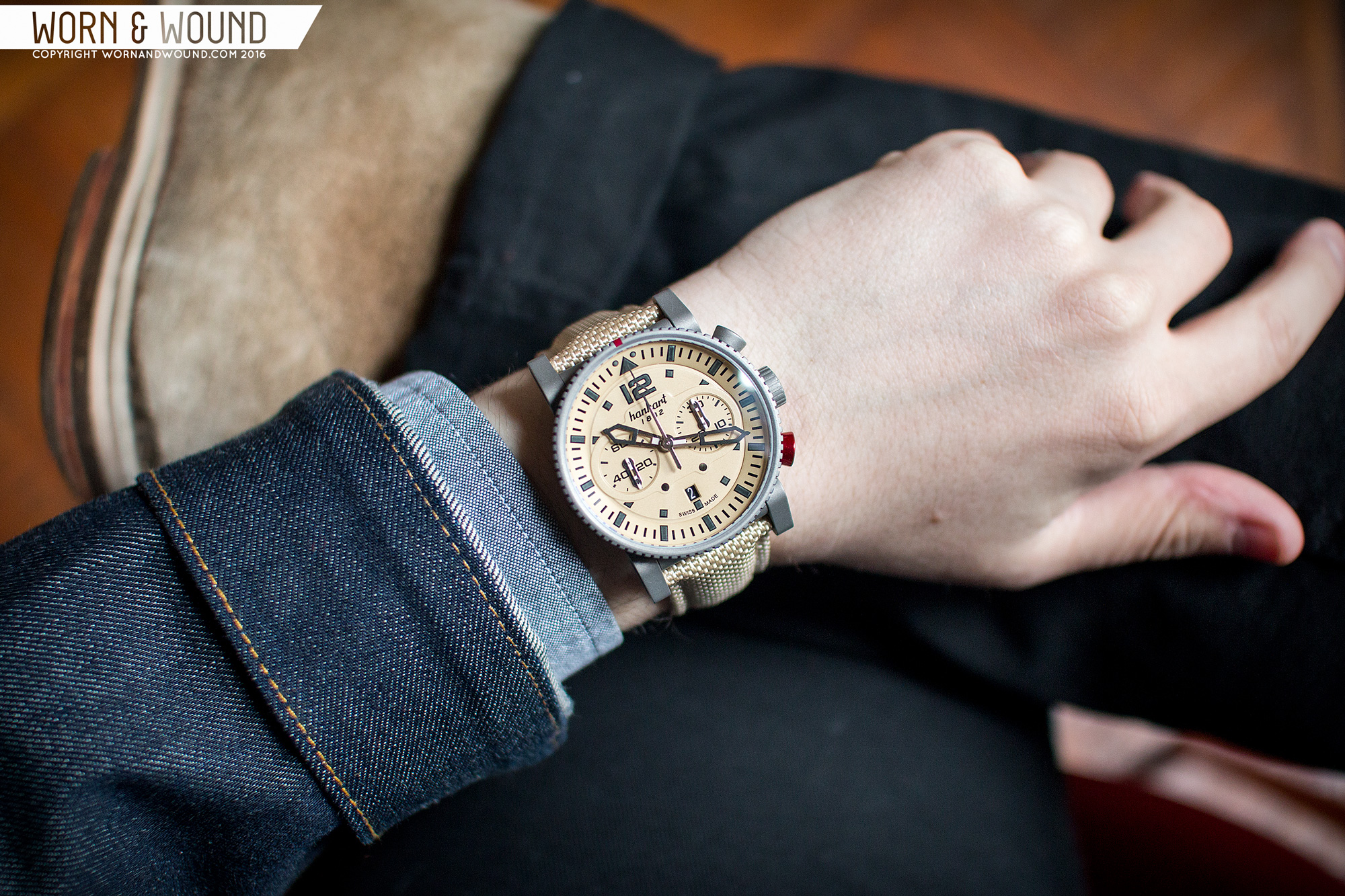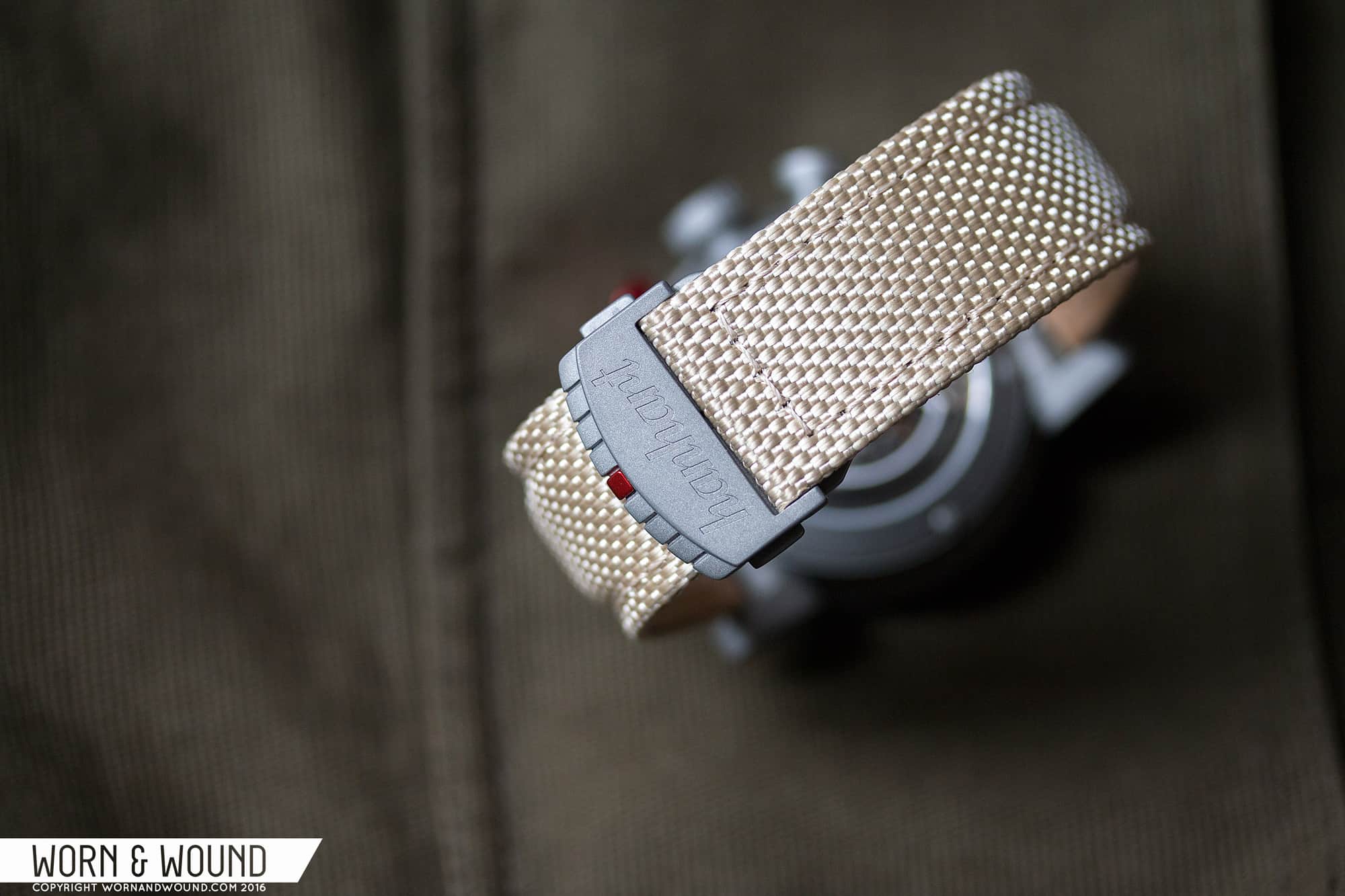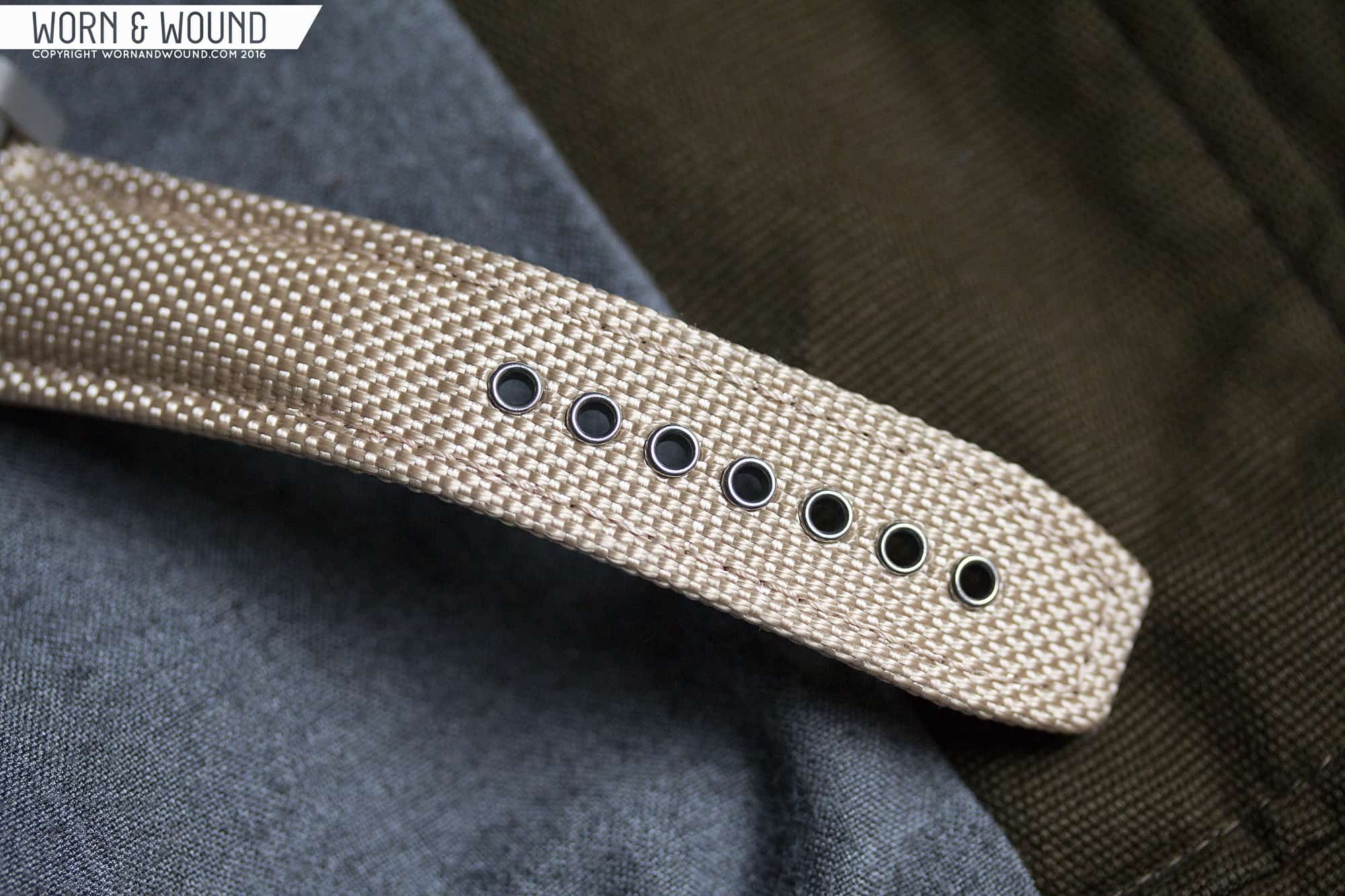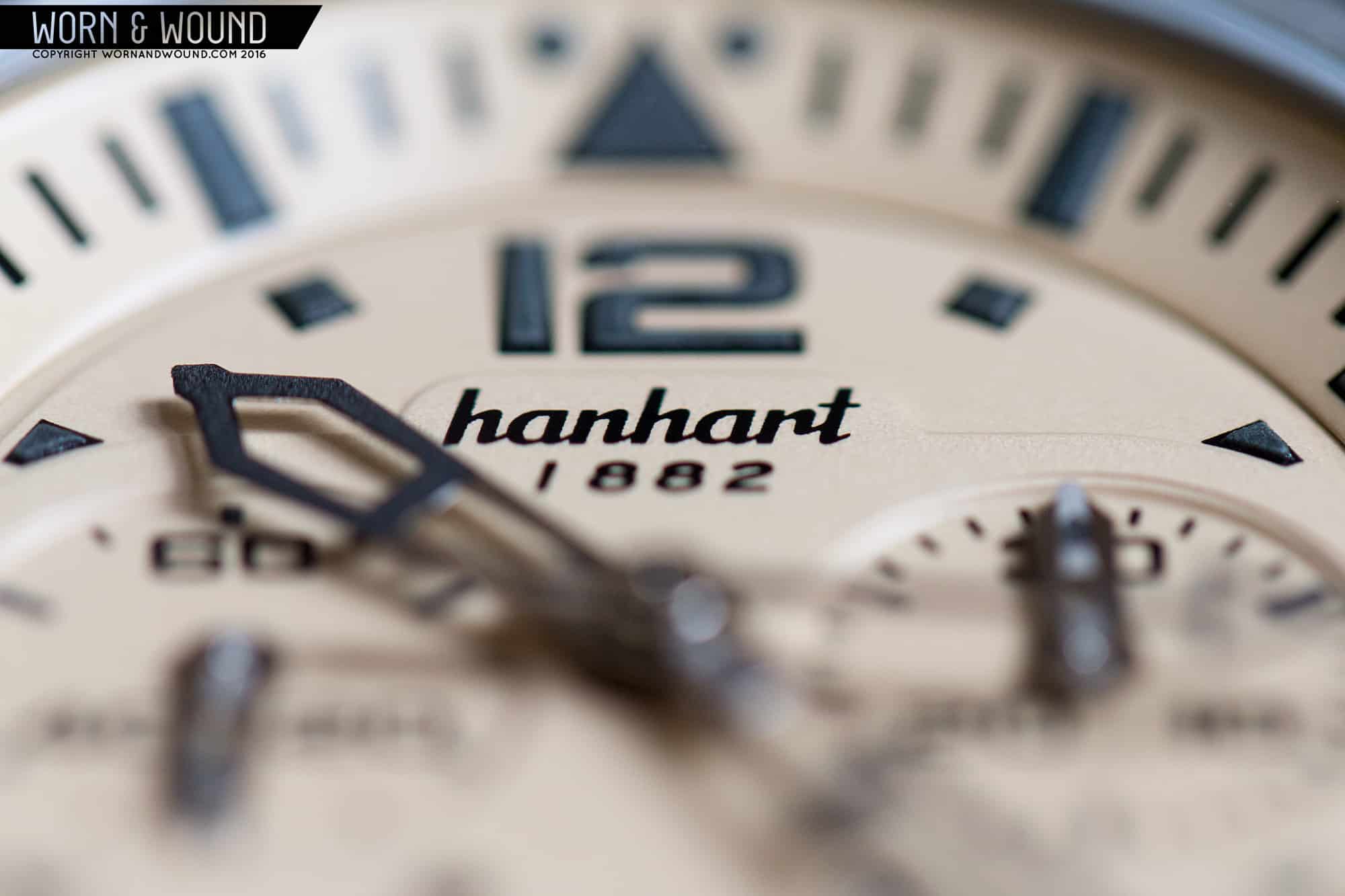When we last reviewed a watch by Hanhart, we took a look at a model that spoke directly to the history of the brand. Named the Pioneer Monocontrol, it was a mono-pusher chronograph that was a slightly modernized version of the famous pilot’s chronographs the brand made in the 1930s. Still one of the most memorable watches we’ve reviewed, it was immaculately made, featured a unique mono-pusher movement that was developed with La Joux Perret and a price tag that while not low, was value-driven.
Today, we’re going to take a look at a watch that speaks less to where Hanhart came from and more to the present/future of the brand. The Hanhart Primus Pilot Desert Sand is an altogether unique watch with a design that is as aggressive as it is intriguing. Part of their Primus line, which also include Racer and Diver varieties, the Pilot is a large chronograph with a distinct case design. Available in a variety of colors, the Desert Sand is particularly interesting due to its atypical khaki dial, giving it a more earthy and military feel.
With the new design details, one will also find a few classic Hanhart cues throughout. As with the Pioneer Monocontrol, the Primus Pilot is powered by a La Joux Perret modified Valjoux 7750, giving it a very high quality and signature heart. Hanhart really is a brand for chronograph and stop watch enthusiasts (they still make their own mechanical stopwatches in house), and this hearty watch is no exception.









 Featured Videos
Featured Videos




